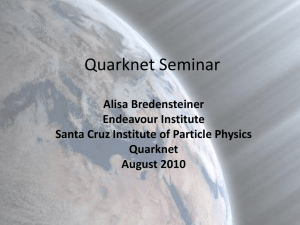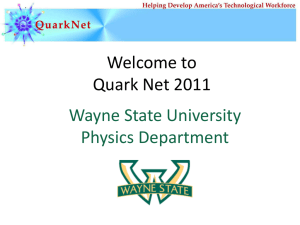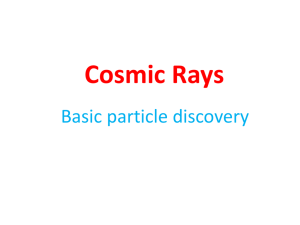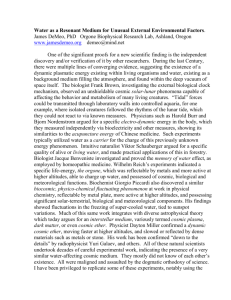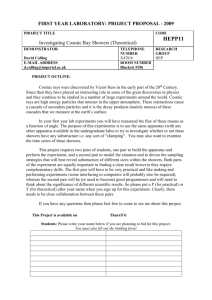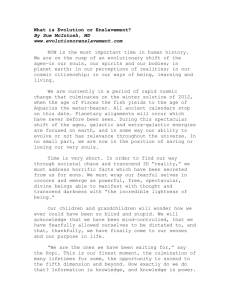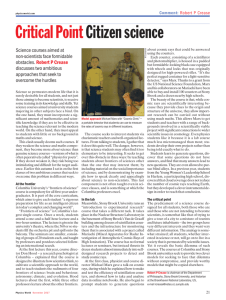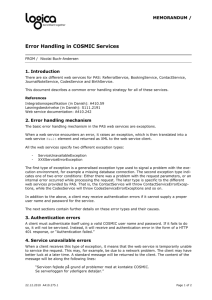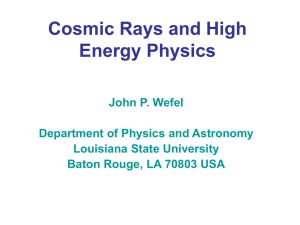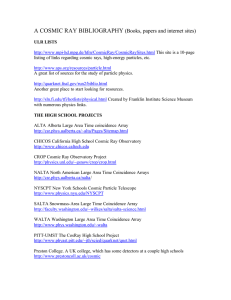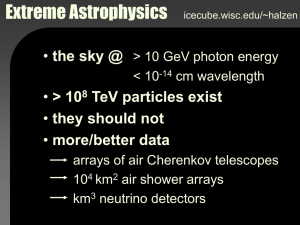Quark Net 2010 - High Energy Physics at Wayne State
advertisement
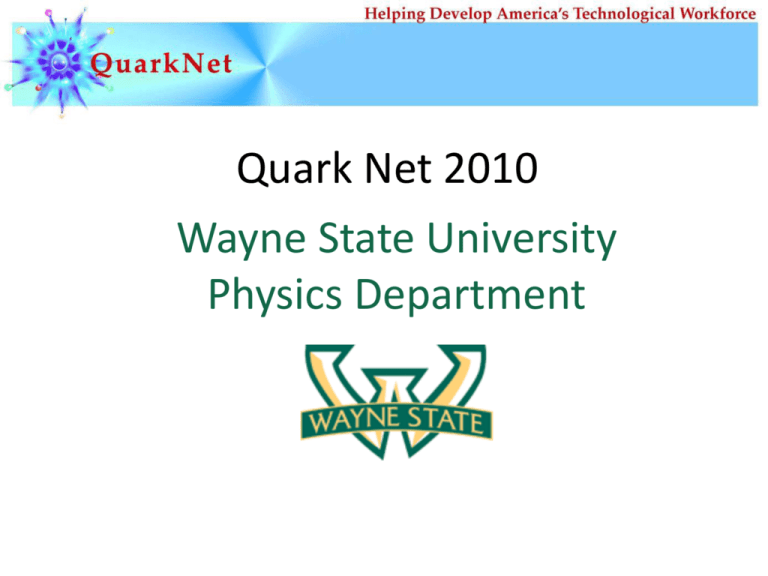
Quark Net 2010 Wayne State University Physics Department Goals for Workshop • Develop a deeper understanding of Physics content • Introduction to Inquiry based learning • Introduction to elementary particles • Methods of experimentation with particles • Overview of current Physics experimentation – FermiLab – CERN Teaching and Learning with Cosmic Rays Teaching and Learning with Cosmic Rays Workshop Goals for Students • Learn and Understand: – The nature of particle Physics – The methods of good scientific inquiry • Conduct Research on Cosmic ray activity – Assemble Cosmic Ray Muon Detectors – Learn the operation of the equipment and the software • Analyze detector data from an accelerator • Prepare a report (PowerPoint) summarizing: – What was learned – The research conducted and the results Agenda for Today 9 – 10 10- 11 Welcome Explain goal of two week program 11 Notre Dame Pretest 11:30 Move to lab Rebuild Detector Paddles 11:30 – 12:30 Lunch 1 Visit by Professor Karchin 1–2 Complete Rebuilding 2 – 2:30 Introduce e-Lab 2:30 E-lab pre-test Teaching and Learning with Cosmic Rays Cosmic Ray e-Lab Teaching and Learning with Cosmic Rays • QuarkNet Overview • QuarkNet Cosmic Ray Detector Assemble CRMD hardware and take data. • Cosmic Ray e-Lab Exploration Upload and analyze data. Teaching and Learning with Cosmic Rays Workshop Objectives: • Assemble CRMD: plateau, geometry, datatake. • Record progress: LogBook. • Design e-Lab investigation: data, tools, plots. • Write report, present results. • Share “Implementation Plan” and strategy. Teaching and Learning with Cosmic Rays • Cosmic Rays – – – – Sources Composition, energy spectrum Detection Current experiments • The QuarkNet Classroom Detector – Hardware overview – Classroom use – Experiments, measurements Difference in Absolute Time • Data Analysis 1500 Frequency – Upload, analyze data & save data products. – Share results. – Enter logbook notes. 2000 1000 500 0 0 10 Time Difference (ns) 20 Teaching and Learning with Cosmic Rays Cosmic Ray e-Lab Stats: May 2010 • 774 teachers accounts • 1,515 student research groups • 519 DAQs worldwide • 335 detectors in high schools • 27,548 data files • 498 posters What is Quarknet? Physicists, teachers & their students collaborate on research projects and investigations. Physicists, teachers & their students collaborate on research projects and investigations. • Scientists as mentors • Teachers as researchers & facilitators • Students as researchers Vision A lasting community of researchers that includes high school teachers and students as well as physicists “Doing science.” School science reflects the practice of science. Science Is what students DO, not what is done to them. Why QuarkNet? Our understanding of the universe is about to change as a new accelerator, the LHC, and its experiments, ATLAS, CMS, ALICE and LHCb turn on. Join particle physicists to work on physics projects exploring the nature of matter, energy, space and time. QuarkNet Origins CDF & DØ at Fermilab Quark Net Origins ATLAS and CMS at CERN Current Active Centers Current Status • 53 Active centers • 158 Mentors • 615 Teachers • 108 Summer students The QuarkNet Collaboration Cosmic Ray Detector • Teachers’ idea • Several prototypes • Collecting data led to e-Lab Student Summer Research 11 centers with 4 student slots each (avg)
